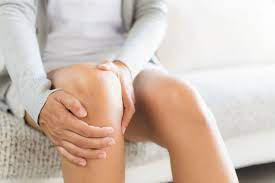How to Treat Gout Attacks at Home
If you have gout, you know the signs that a
flare-up is on the way. There's nothing you can do to stop an attack once it
starts, but you can ease some of the symptoms at home.
Warning Signs of a Gout Flare-Ups
Some people with gout, also known as gouty arthritis, say an
attack begins with a burning, itching, or tingling feeling in a joint maybe an
hour or two before the flare-up starts. The joint may feel a little stiff or a
bit sore. Not long after, the telltale signs of gout begin. If you get repeated
attacks, you'll learn your body's signals that one is about to begin.
Sometimes, people with gout have no early signs that a flare
is about to start. They may just wake up in the middle of the night with a very
painful joint.
When the flare starts, most people have redness, swelling,
and severe pain, usually in one joint. The most common place for
gout is the base of the big toe, but it can happen in other joints such as the
elbow, knee, wrist, ankle, and instep.
Pain Relief without Medicine
Use
cold. If your pain isn't too bad, try cold packs or compresses on
the joint to lower inflammation and soothe the ache. Wrap ice in a thin towel
and apply it to the joint for up to 20 minutes several times a
day. Do not apply ice to your hands or feet if you have nerve problems
from diabetes or other causes.
Rest
the joint. It's a good idea to rest it until the pain eases up.
You probably won't want to move it much anyway. If you can, raise the joint on
a pillow or other soft object.
Drink water. When
your body doesn’t have enough water, your uric acid levels rise even higher.
Stay hydrated to help keep those levels normal.
Watch
what you eat and drink. Foods that are high in substances called
purines, such as some seafood, organ meats like liver, and fatty foods, can
raise the uric acid in your blood even more. So can fructose-sweetened drinks
and alcohol -- especially beer.
When to Get Help for a Gout Flare
It's
always a good idea to let your doctor know that you are having a flare.
Sometimes, you may need to follow up to make sure your treatment plan is
working or if your symptoms don't improve. Call your doctor if:
This
is your first flare-up. There are several other conditions, such as a
joint infection, that have some of the same symptoms as gout attacks.
You
have a high fever and chills. Gout attack symptoms may include a mild
fever, but a higher temperature may be a sign of an infection.
Your
symptoms don't get any better after 48 hours or don't end after about a week.
If you don't start to feel somewhat better after a few days, call your doctor.
They may suggest a different treatment. Most gout attacks
will go away by themselves in several weeks, even without treatment and also
you can visit our online pharmacy



Comments
Post a Comment